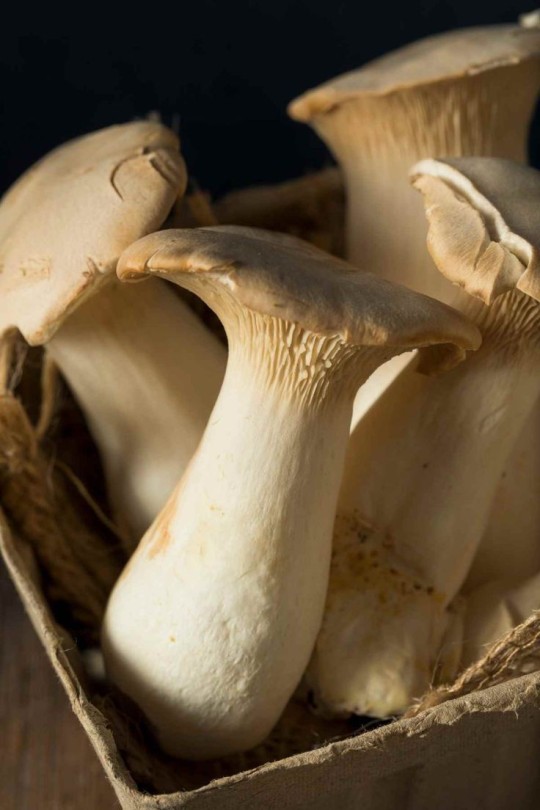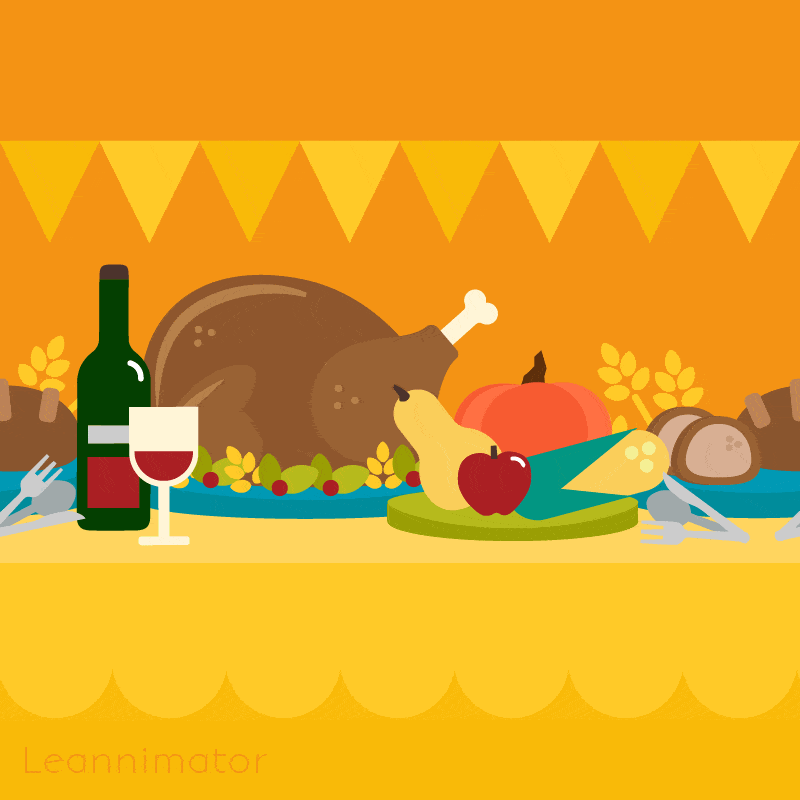#Foods to include in diabetic meal plans
Explore tagged Tumblr posts
Text

Discover the ultimate guide to power foods for diabetes management. Learn what to eat and why for better health and glucose control.
Do Visit: https://www.healixhospitals.com/blogs/the-ultimate-guide-to-power-foods-for-diabetes-management:-what-to-eat-and-why
#Power Foods for Diabetes Management#Diabetes power foods#Food choices for diabetes#Diabetes-friendly diet#Diabetes meal planning#Foods for blood sugar control#Nutrient-rich foods for diabetes#Healthy eating with diabetes#Managing diabetes with diet#Diabetes superfoods#Balanced diet for diabetes#Diabetes nutrition guide#Foods that lower blood sugar#Best foods for diabetic patients#Diabetes diet tips#Foods to include in diabetic meal plans
1 note
·
View note
Text

NUTRITION JOURNALS: VITAMINS (PT 2/2)
WHAT IS THIAMINE?
- thiamine/thiamin (B1) is required by our bodies to properly use carbohydrates. It also helps maintain proper nerve function, and can be found in foods such as yeast, cereal grains, beans, nuts, and meat. its also used for digestive problems, diabetic nerve pain, heart disease, and other conditions, but there is no good scientific evidence to support these other uses. - thiamine is water-soluble, which means that it dissolves in water and isn’t stored in your body, so you need to consume it on a regular basis. your body can only store around 20 days worth of thiamine at any given time.
WHAT IS RIBOFLAVIN?
- riboflavin (B2) is required for the proper development of the skin, lining of the digestive tract, blood cells, and brain function. it is widely found in both plant and animal based foods, including milk, meat, eggs, nuts, enriched flour, and green vegetables. - B2 is vital for energy metabolism. It’s necessary for metabolizing carbs, protein, and fats into glucose for energy. without riboflavin, carbs, fats, and proteins can’t be digested. - riboflavin greatly affects the formation of other B vitamins, such as niacin and vitamin B6 (pyridoxine). These vitamins are also essential for weight loss. In fact, riboflavin is required to generate the active form of vitamin B6. vitamin B6 enhances weight loss as well. High levels of vitamin B6 have been linked to lower BMI.
WHAT IS NIACIN?
- niacin (B3) is important for general good health because your body uses it to turn food into energy. B3 is also essential for the health of your nervous system, digestive system, and skin. - niacin can be found in red meat, poultry, fish, brown rice, nuts, seeds, legumes, and bananas. many cereals and breads also have niacin added. - although getting plenty of niacin in your diet helps keep energy levels high, niacin doesn't likely relate directly to weight loss. eating a well-balanced diet containing plenty of niacin and other B vitamins as part of a reduced calorie meal plan gives you the best chance at successfully shedding pounds.
WHAT IS PATHOGENIC ACID?
- pathogenic acid (B5) is widely found in both plants and animals including meat, vegetables, cereal grains, legumes, eggs, and milk. it helps the body utilize carbohydrates, proteins, and lipids. It is also important for maintaining healthy skin. - B5 can be used in weight loss to help in breaking down fats and carbohydrates, two main causes of increased weight.
WHAT IS BIOTIN?
- helps your body break down food into energy and supports many parts of your body, including your nervous system, liver, eyes, hair, and skin. you can get it from eating meats, eggs, fish, seeds, nuts, and some vegetables, or by taking a daily supplement. - biotin supplements may help manage symptoms of diabetes. it might help reduce blood sugar levels, total cholesterol, and blood fats in some people with diabetes, but it doesn't have much effect on insulin levels.
WHAT IS FOLATE?
- folate (B9) is important in red blood cell formation and for healthy cell growth and function. it can be found mainly in dark green leafy vegetables, beans, peas and nuts. fruits rich in folate include oranges, lemons, bananas, melons and strawberries. - there is not strong evidence to suggest taking folic acid will help you lose weight, but it is still something your body needs.

#pierrot reviewed#nutrition journals#ed rant#ed but not ed sheeran#tw ed ana#tw ed not ed sheeren#tw 3d vent#tw ana bløg#tw ana rant#ana advice#ed blr#ednotedsheeran#boy ed#ed blogg#ed boy#ed diet tips#ed ftm#ed male#ed moots#ed nonsense#ed twt#edbr#ftm ed#male ed#trans ed#transmasc ed#tw ed implied#tw edtwt#ana twt#tw 3d diet
28 notes
·
View notes
Text
The King of Mushrooms: A Nutritional Powerhouse

In the realm of functional foods, mushrooms have emerged as a nutritional powerhouse, offering a plethora of health benefits. Among these, the King Oyster mushroom, scientifically known as Pleurotus eryngii, stands tall as a culinary delight and a nutritional champion. Let's delve into the nutritional profile of this extraordinary fungus.
A Nutritional Breakdown
King Oyster mushrooms boast a nutritional profile that rivals many conventional protein sources. Here's a breakdown of their key nutrients:
Protein: These mushrooms are a fantastic source of plant-based protein, making them an excellent choice for vegetarians and vegans.
Fiber: Rich in dietary fiber, King Oysters promote digestive health and satiety.
Vitamins and Minerals: They are packed with essential vitamins and minerals, including B vitamins, potassium, phosphorus, and selenium.
Low in Calories: Despite their nutritional density, King Oysters are low in calories, making them a guilt-free addition to your diet.
Health Benefits Beyond Nutrition
The nutritional prowess of King Oyster mushrooms extends beyond their basic nutrient profile. Here are some of the remarkable health benefits associated with these fungi:
Immune Boost: The beta-glucans present in King Oysters have been shown to stimulate the immune system, enhancing the body's defense mechanisms.
Antioxidant Power: These mushrooms are rich in antioxidants, which help combat oxidative stress and protect cells from damage.
Anti-inflammatory Properties: Certain compounds in King Oysters exhibit anti-inflammatory effects, reducing inflammation and promoting overall well-being.
Blood Sugar Regulation: Studies suggest that King Oysters may help regulate blood sugar levels, making them beneficial for individuals with diabetes.
Heart Health: The fiber, potassium, and antioxidants in these mushrooms contribute to heart health by lowering cholesterol levels and reducing the risk of heart disease.
Incorporating King Oyster Mushrooms into Your Diet
King Oyster mushrooms are incredibly versatile and can be incorporated into various dishes. Here are a few ideas:
Sautéed: Sauté them with garlic, olive oil, and herbs for a quick and flavorful side dish.
Grilled: Grill them to perfection, adding a smoky flavor that complements their meaty texture.
Steamed: Steaming preserves their delicate flavor and nutritional value.
Soups and Stews: Add them to soups and stews for a hearty and nutritious meal.
Pasta Dishes: Incorporate them into pasta dishes for a unique and satisfying flavor.
Conclusion
King Oyster mushrooms are a culinary treasure and a nutritional powerhouse. Their unique combination of nutrients and potential health benefits makes them a valuable addition to a balanced diet. So, the next time you're planning your meals, consider adding these royal fungi to your plate. Your taste buds and your body will thank you!

13 notes
·
View notes
Text
A Comprehensive Diet Plan for Managing Hypoglycemia
Introduction
Hypoglycemia, often referred to as low blood sugar, is a condition characterized by abnormally low levels of glucose in the blood. Glucose is the primary source of energy for the body’s cells, and maintaining its levels within a healthy range is crucial for optimal functioning. Hypoglycemia can cause symptoms like shakiness, dizziness, confusion, and in severe cases, unconsciousness. A well-structured diet plan is essential for managing hypoglycemia, as it helps stabilize blood sugar levels and prevent episodes of low blood sugar.
Understanding Hypoglycemia
Before diving into the diet plan, it’s important to understand the types and causes of hypoglycemia. Hypoglycemia can be classified into two categories:
Reactive Hypoglycemia: This occurs within a few hours after eating, often due to an excessive insulin response that drives blood sugar levels too low.
Fasting Hypoglycemia: This type occurs when blood sugar drops after fasting or going without food for an extended period.
Common causes of hypoglycemia include diabetes management (particularly insulin or medication use), prolonged fasting, excessive alcohol consumption, and certain medical conditions. Regardless of the cause, a balanced diet plays a critical role in managing the condition.
Key Principles of a Hypoglycemia Diet Plan
The goal of a diet plan for hypoglycemia is to maintain steady blood glucose levels throughout the day. Here are the key principles:
Frequent Small Meals: Eating smaller, more frequent meals (every 3-4 hours) helps prevent large fluctuations in blood sugar levels. This approach keeps glucose levels stable and provides a constant source of energy.
Balanced Macronutrients: Each meal should include a combination of complex carbohydrates, protein, and healthy fats. This balance helps slow the absorption of glucose into the bloodstream and provides a steady release of energy.
Focus on Complex Carbohydrates: Complex carbohydrates, such as whole grains, vegetables, and legumes, are digested more slowly than simple sugars, preventing rapid spikes and drops in blood sugar levels.
Include Protein in Every Meal: Protein helps slow down carbohydrate absorption and keeps you feeling full longer. Good sources include lean meats, fish, eggs, dairy products, legumes, and nuts.
Healthy Fats: Incorporating healthy fats like those found in avocados, nuts, seeds, and olive oil can help stabilize blood sugar and provide long-lasting energy.
Avoid Simple Sugars and Refined Carbs: Foods high in refined sugars and simple carbohydrates, such as candy, sugary drinks, and white bread, can cause rapid spikes followed by sharp drops in blood sugar levels.
Stay Hydrated: Proper hydration is essential, as dehydration can worsen the symptoms of hypoglycemia. Water, herbal teas, and electrolyte-balanced drinks are good choices.
Sample Diet Plan for Hypoglycemia
Here’s a sample one-day meal plan designed to help manage hypoglycemia:
Breakfast:
- Oatmeal: Made with rolled oats, topped with sliced almonds, chia seeds, and a handful of fresh berries.
- Greek Yogurt: A small serving of unsweetened Greek yogurt for added protein.
Mid-Morning Snack:
- Apple Slices with Nut Butter: An apple sliced and spread with almond or peanut butter.
- Hard-Boiled Egg: For extra protein.
Lunch:
- Grilled Chicken Salad: Mixed greens with grilled chicken, quinoa, cherry tomatoes, cucumbers, and a dressing made from olive oil and lemon juice.
- Whole-Grain Crackers: A small serving for added complex carbohydrates.
Afternoon Snack:
- Hummus with Veggies: Carrot sticks, celery, and bell pepper slices dipped in hummus.
- Mixed Nuts: A small handful of unsalted mixed nuts.
Dinner:
- Baked Salmon: A portion of baked salmon served with steamed broccoli and sweet potatoes.
- Brown Rice: A small serving for added complex carbohydrates.
Evening Snack:
- Cottage Cheese: A small serving of cottage cheese topped with a few slices of avocado.
- Berries: A handful of mixed berries.
Additional Tips
Monitor Portion Sizes: Eating too much at one time can cause blood sugar levels to spike and then crash. Pay attention to portion sizes and avoid overeating.
Limit Alcohol: If you consume alcohol, do so in moderation and never on an empty stomach, as it can lower blood sugar levels.
Keep Emergency Snacks Handy: In case of a hypoglycemic episode, keep snacks like glucose tablets, juice boxes, or a small pack of crackers nearby.
Consult with a Healthcare Professional: It’s important to work with a healthcare provider or a registered dietitian to create a personalized plan that suits your individual needs and medical condition.

Simple Technique To Help Manage Blood Sugar
Conclusion
Managing hypoglycemia through diet requires careful planning and consistency. By eating balanced meals regularly, focusing on nutrient-dense foods, and avoiding simple sugars, individuals with hypoglycemia can better control their blood sugar levels and reduce the risk of low blood sugar episodes. Remember, each person’s nutritional needs are different, so it’s essential to tailor the diet plan to your specific condition and lifestyle.
#health tips#healthcare#diabetes supplement#diabetic support supplement#blood sugar supplement#diabetes#hypoglycemia
9 notes
·
View notes
Text
How Sugar and Processed Foods Impact Your Health
In today’s fast-paced world, sugar and processed foods have become staples in many diets. While convenient and often tasty, these foods can have significant negative effects on your health. Understanding their impact is crucial for making informed dietary choices.
What Are Processed Foods?
Processed foods are items that have been altered from their natural state for convenience, taste, or shelf life. Examples include packaged snacks, sugary cereals, soft drinks, frozen meals, and fast food.
These products are often high in added sugars, unhealthy fats, and sodium, while being low in essential nutrients like fiber and vitamins.
The Role of Sugar in Your Diet
Sugar, especially added sugar, is a major ingredient in many processed foods. Added sugars are those that are not naturally occurring in food, such as the sugar in fruits.
They include sweeteners like high-fructose corn syrup, white sugar, and honey added during processing.
The World Health Organization (WHO) recommends that added sugars make up less than 10% of your daily caloric intake. However, many people consume far more, leading to various health risks.
The Health Impacts of Sugar and Processed Foods
1. Weight Gain and Obesity
Sugary and processed foods are often calorie-dense and low in satiety. This means they don’t fill you up as effectively as whole, nutrient-dense foods. Overconsumption of these items can lead to weight gain and obesity, which are risk factors for numerous diseases, including heart disease and diabetes.
2. Increased Risk of Type 2 Diabetes
Excess sugar consumption can lead to insulin resistance, a condition where your body’s cells become less responsive to insulin. Over time, this can result in elevated blood sugar levels and eventually type 2 diabetes. Studies consistently show a strong correlation between sugary beverage consumption and diabetes risk.
3. Heart Health Issues
A diet high in sugar and processed foods can increase triglycerides, lower HDL (good cholesterol), and raise LDL (bad cholesterol), all of which are risk factors for heart disease. Additionally, these foods are often high in trans fats and sodium, which can contribute to hypertension and other cardiovascular problems.
4. Digestive and Gut Health Problems
Processed foods lack dietary fiber, which is essential for a healthy gut. Fiber helps regulate digestion, prevents constipation, and supports beneficial gut bacteria. A low-fiber diet can lead to gastrointestinal issues and increase the risk of diseases like colorectal cancer.
5. Poor Mental Health
Emerging research suggests a link between diet and mental health. Diets high in sugar and processed foods have been associated with increased rates of depression and anxiety. The spikes and crashes in blood sugar levels can affect mood stability, energy levels, and cognitive function.
6. Inflammation and Chronic Diseases
Added sugars and artificial ingredients in processed foods can trigger inflammation in the body. Chronic inflammation is linked to a range of health issues, including arthritis, autoimmune diseases, and even cancer.
How to Reduce Sugar and Processed Food Intake
Read Labels Carefully
Look for hidden sugars in ingredients lists. Common terms include high-fructose corn syrup, maltose, dextrose, and sucrose.
Opt for Whole Foods
Choose fresh fruits, vegetables, whole grains, and lean proteins over packaged and processed alternatives.
Cook at Home
Preparing meals at home gives you control over ingredients and portion sizes.
Hydrate Wisely
Replace sugary beverages like sodas and energy drinks with water, herbal teas, or infused water for flavor.
Plan Your Meals
Having a meal plan can help you avoid the temptation of convenience foods.
Limit Fast Food
Meta Description: Discover how sugar and processed foods impact your health, leading to issues like weight gain, diabetes, and heart disease. Learn tips for reducing their intake for a healthier lifestyle.
When dining out, opt for healthier options and avoid fried or sugary items.
Conclusion
Sugar and processed foods can have a detrimental impact on your health, contributing to a range of issues from obesity and diabetes to mental health problems.
While it’s okay to indulge occasionally, prioritizing a diet rich in whole, natural foods is key to long-term well-being.
By making small, sustainable changes, you can significantly improve your overall health and quality of life.
youtube
3 notes
·
View notes
Text
Can Metformin Really Cause Low Blood Sugar? The Truth Revealed
When it comes to managing diabetes, Metformin is often the go-to medication. It helps lower blood sugar levels, making life easier for many people. But there's a question swirling around: Can Metformin actually cause low blood sugar, also known as hypoglycemia? Let’s uncover the truth together.
What is Metformin?
Metformin, a medication mainly prescribed for Type 2 diabetes, works by improving insulin sensitivity and reducing sugar production in the liver. It's often the first medication doctors prescribe because it’s effective and generally safe. But with any medication, side effects can occur, and understanding them is crucial.
The Basics of Low Blood Sugar
Low blood sugar happens when your blood glucose levels drop below what’s normal. Symptoms can include shakiness, sweating, confusion, and even fainting. It’s important to know how to recognize these signs, especially if you're taking medications that affect blood sugar levels.
Metformin and Blood Sugar Levels
You might think Metformin could easily lead to low blood sugar because it lowers glucose. However, Metformin alone is highly unlikely to cause hypoglycemia. This medication primarily works by managing blood sugar levels rather than dropping them excessively. So why do some people experience low blood sugar while on Metformin?
Why Do Some Experience Low Blood Sugar?
While Metformin itself doesn’t usually cause low blood sugar, other factors can contribute:
Combination Medications: If you're taking other diabetes medications alongside Metformin, like sulfonylureas or insulin, the risk of low blood sugar increases.
Diet and Exercise: Skipping meals or engaging in intense exercise without adjusting your food intake might also lead to a drop in blood sugar levels.
Alcohol Consumption: Drinking alcohol can interfere with blood sugar levels and might cause hypoglycemia, especially if combined with diabetes medications.
The Role of Diet and Lifestyle
Managing your diet and being mindful of your lifestyle are crucial when taking Metformin. Eating regular meals and snacks can help stabilize blood sugar levels. It's like keeping a steady beat in music – consistency keeps everything in tune. If you suddenly skip a beat by missing a meal, you might feel the effects.
Monitoring Your Blood Sugar
For anyone on Metformin, regular monitoring of blood sugar is vital. Understanding your numbers helps in making better decisions about food and activity. It’s a bit like managing your bank account; you want to know when you're running low so you can top it up before it's too late.
Conclusion: The Bottom Line
So, can Metformin really cause low blood sugar? The short answer is no, not on its own. However, it's essential to consider your overall treatment plan, diet, and lifestyle. Keeping an eye on how your body reacts and working closely with your healthcare provider can ensure that you stay on top of your health. Staying informed helps you navigate your journey with confidence, making diabetes management smoother one step at a time.
#diabetes#diabetescommunity#gestational diabetes#health and wellness#healthcare#type 1 diabetes#type 2 diabetes#wellnessjourney#insulin#diabetescare#blood sugar#healthy lifestyle#healthy eating#north carolina#north america#usa
3 notes
·
View notes
Text
Exploring Plant-Based Diets
What is a Plant-Based Diet?
A plant-based diet emphasizes whole foods derived from plants while minimizing or eliminating animal products. This includes fruits, vegetables, nuts, seeds, oils, whole grains, legumes, and beans. While some people may choose to follow a strictly vegan diet (which excludes all animal products), others may include small amounts of meat or dairy but still prioritize plant foods.
Health Benefits of Plant-Based Eating
Nutrient-Rich Foods: Plant-based diets are typically rich in vitamins, minerals, antioxidants, and fiber while being lower in calories than diets high in animal products.
Weight Management: Research indicates that individuals following plant-based diets tend to have lower body mass indexes (BMIs) compared to those consuming more animal products.
Reduced Risk of Chronic Diseases: Numerous studies suggest that plant-based diets are associated with a lower risk of heart disease, hypertension, type 2 diabetes, certain cancers, and other chronic conditions.
Improved Digestive Health: High fiber intake from fruits, vegetables, legumes, and whole grains promotes healthy digestion by supporting gut health.
Environmental Impact: Adopting a plant-based diet can significantly reduce one’s carbon footprint as plant agriculture generally requires fewer resources than livestock farming.
Getting Started with a Plant-Based Diet
Transitioning to a plant-based diet doesn’t have to be overwhelming; here are some tips for making the switch:
Start Slow: Begin by incorporating more plant-based meals into your week rather than overhauling your entire diet at once.
Explore New Recipes: Discover new flavors by trying out different cuisines known for their plant-based dishes such as Mediterranean or Asian cooking.
Focus on Whole Foods: Prioritize whole grains over processed foods; opt for brown rice instead of white rice or whole grain bread instead of white bread.
Plan Your Meals: Meal planning can help ensure you’re getting balanced nutrition while making it easier to stick with your new eating habits.
Stay Informed About Nutrition: Educate yourself about essential nutrients like protein (found in legumes), iron (found in leafy greens), calcium (found in fortified plant milks), and vitamin B12 (which may require supplementation).
#healthyliving#health & fitness#plantbased#healthy diet#plant based food#fitness enthusiasts#health is wealth
2 notes
·
View notes
Text
Here is a sneak peak of two of my meal plans that are available on my website! 🍎🫐🥑🍓🥦🍋
Due to popular demand, and after seeing the difference they’ve made for my clients, I’m thrilled to share them with you all! Each plan is crafted to meet different health needs and goals.
MEAL PLANS:
* Hormone Harmony (available): Balance hormones, energy, and mood
* Heart-Healthy (available): DASH/Mediterranean for heart support
* Gut-Friendly (coming soon): Low-FODMAP for digestive ease
* Gluten-Free Living (coming soon)
* Inflammation-Reducing (coming soon)
* Blood Sugar Balance (coming soon): Diabetes-friendly
* Plant-Powered (coming soon): Vegan/Vegetarian
Each Meal Plan Includes:
• 2-week meal plan tailored to your health goal
• Grocery lists for easy prep
Daily dietary guidance & foods to prioritize
• Macro & micronutrient breakdowns
• Supplement suggestions & schedule
• Foods to decrease
• Meal prep tips
• Mind-Body journal pages
• Long-term lifestyle tips
Visit eatcleanbewhole.com for more!
#Health#healthy#healthylifestyle#healthyliving#fitness#anticancer#vegan#guthealth#antiinflammatory#weightloss#healthymeals#food#diet#healthjourney#weightlossjourney#autoimmune#disease#hearthealth#hypertension#diabetes#meal plan#mealplan
2 notes
·
View notes
Text
The Role of Protein-Rich Foods in Semaglutide-Fueled Weight Loss
Semaglutide, a medication originally developed for managing Type 2 diabetes, has gained significant attention for its weight loss benefits. However, to maximize its effectiveness, a supportive diet is essential. Protein-rich foods play a crucial role in enhancing the weight loss effects of Semaglutide, making them an indispensable part of your dietary plan. In this article, we’ll explore why protein matters, how it complements Semaglutide, and highlight the best foods to eat on Semaglutide for sustainable weight loss.
Why Protein Matters for Weight Loss

Protein is a vital macronutrient that supports multiple bodily functions, especially during weight loss. Its benefits include:
1. Increased Satiety
Protein helps you feel fuller for longer by reducing the hunger hormone ghrelin and increasing appetite-regulating hormones like GLP-1, the same hormone targeted by Semaglutide. Combining protein with Semaglutide enhances feelings of fullness and minimizes overeating.
2. Muscle Preservation
When losing weight, the body can lose muscle mass along with fat. Protein helps preserve lean muscle, ensuring that the majority of weight lost comes from fat. This is crucial for maintaining a healthy metabolism.
3. Boosted Metabolism
Digesting protein requires more energy than digesting fats or carbohydrates, a phenomenon known as the thermic effect of food (TEF). Including protein-rich foods in your Semaglutide-fueled diet can give your metabolism a slight boost.
How Protein-Rich Foods Complement Semaglutide
Semaglutide works by mimicking GLP-1, a hormone that regulates appetite and blood sugar levels. Protein-rich foods enhance this effect by naturally stimulating GLP-1 secretion. This synergy leads to:
Enhanced appetite control
Improved blood sugar stability
Better adherence to calorie-controlled diets
When combined with a high-protein diet, Semaglutide can deliver faster and more sustainable weight loss results.
Best Protein-Rich Foods to Eat on Semaglutide

To ensure your diet aligns with Semaglutide’s benefits, focus on these protein-rich options:
1. Lean Meats
Chicken Breast: Low in fat and high in protein, chicken breast is an excellent choice for weight loss.
Turkey: Another lean meat option that’s rich in protein and low in calories.
2. Fish and Seafood
Salmon: Packed with protein and omega-3 fatty acids, salmon promotes heart health while keeping you full.
Tuna: A convenient, protein-dense food that’s perfect for quick meals or snacks.
Shrimp: Low-calorie and high in protein, shrimp is an ideal addition to a weight loss diet.
3. Eggs
Eggs are versatile, nutrient-rich, and an affordable source of high-quality protein. They’re perfect for breakfast, snacks, or as a meal component.
4. Dairy Products
Greek Yogurt: High in protein and probiotics, Greek yogurt supports digestion and satiety.
Cottage Cheese: A low-fat, protein-packed dairy option that’s easy to incorporate into meals.
5. Plant-Based Proteins
Legumes: Lentils, chickpeas, and black beans are rich in protein and fiber, making them a filling and nutritious choice.
Tofu and Tempeh: Excellent options for vegetarians and vegans, these soy-based proteins are versatile and nutrient-dense.
Quinoa: A complete protein that’s also gluten-free and rich in fiber.
6. Nuts and Seeds
While calorie-dense, nuts and seeds like almonds, chia seeds, and flaxseeds provide plant-based protein, healthy fats, and fiber. Consume them in moderation.
How to Incorporate Protein-Rich Foods Into Your Diet

1. Prioritize Protein at Every Meal
Ensure that each meal contains a significant protein source to maintain satiety and support muscle preservation.
2. Snack Smart
Choose protein-rich snacks like boiled eggs, Greek yogurt, or a handful of nuts to curb hunger between meals.
3. Combine Protein With Fiber
Pair protein with fiber-rich foods like vegetables or whole grains to enhance satiety and support digestion.
4. Plan and Prep Meals
Prepping meals with a focus on protein ensures you stay consistent with your dietary goals while on Semaglutide.
Foods to Limit or Avoid
While protein-rich foods are beneficial, it’s essential to avoid processed and high-fat protein sources, such as:
Fried meats
Processed deli meats (e.g., sausages, hot dogs)
Full-fat dairy products
Instead, opt for lean, minimally processed options to maximize weight loss benefits.
Breaking Through Weight Loss Plateaus on Semaglutide
Even with Semaglutide, weight loss plateaus can occur. Increasing protein intake is one strategy to break through a plateau. Other tips include:
Adjusting Calorie Intake: Reassess your calorie needs as your weight decreases.
Increasing Physical Activity: Incorporate resistance training to build muscle and boost metabolism.
Hydration and Sleep: Staying hydrated and getting enough sleep are essential for weight loss success.
Conclusion
Protein-rich foods play a pivotal role in enhancing the weight loss effects of Semaglutide. By prioritizing lean proteins, incorporating plant-based options, and avoiding processed choices, you can maximize the medication’s benefits and achieve sustainable results.
Discover the best foods to eat on Semaglutide and make protein a cornerstone of your dietary plan for a healthier, more successful weight loss journey!
2 notes
·
View notes
Text
The Ultimate Guide To Power Foods For Diabetes Management: What To Eat And Why

Managing diabetes effectively requires a holistic approach that includes regular physical activity, medication (if prescribed), and, importantly, a carefully planned diet. For those navigating the complexities of diabetes, understanding which foods can aid in blood sugar control is paramount. This guide explores the ultimate power foods for diabetes management, highlighting what to eat and why these foods are beneficial.
What Are Power Foods?
Power foods for diabetes management are nutrient-dense foods that provide essential vitamins, minerals, and other nutrients with minimal calories. For individuals with diabetes, power foods can help manage blood sugar levels, promote heart health, and support overall well-being. Incorporating these diabetes power foods into your diet can significantly impact your health positively.
Top Power Foods for Diabetes Management
1. Leafy Greens
Leafy greens such as spinach, kale, and Swiss chard are diabetes power foods packed with vitamins A, C, E, and K. They are low in calories and carbohydrates, making them an excellent choice for maintaining stable blood sugar levels. Additionally, leafy greens are rich in antioxidants and can reduce inflammation, a common issue for people with diabetes.
2. Fatty Fish
Salmon, mackerel, sardines, and trout are rich in omega-3 fatty acids, which are essential for heart health. Heart disease is a major concern for individuals with diabetes, and consuming fatty fish can help reduce the risk. Omega-3s also help lower triglycerides and improve insulin sensitivity, making them crucial in a diabetes-friendly diet.
3. Nuts and Seeds
Almonds, walnuts, flaxseeds, and chia seeds are excellent sources of healthy fats, protein, and fiber. These foods help control blood sugar levels by slowing down the absorption of glucose. Including nuts and seeds in your diabetes meal planning can also aid in weight management and reduce the risk of heart disease.
4. Berries
Berries, such as blueberries, strawberries, and raspberries, are packed with antioxidants, vitamins, and fiber. These nutrient-rich foods for diabetes have a low glycemic index, which means they have a minimal impact on blood sugar levels. Berries also provide essential nutrients that can boost your immune system and protect against oxidative stress.
5. Whole Grains
Whole grains like quinoa, brown rice, barley, and oatmeal are excellent choices for those with diabetes. These foods are high in fiber, which helps regulate blood sugar levels and improve digestion. Whole grains also provide essential nutrients such as magnesium, which plays a role in insulin function and glucose control.
6. Legumes
Beans, lentils, and chickpeas are high in protein, fiber, and complex carbohydrates. These foods for blood sugar control have a low glycemic index and can help maintain stable blood sugar levels. Legumes are also a good source of iron, folate, and potassium, making them a valuable addition to a diabetes-friendly diet.
7. Greek Yogurt
Greek yogurt is a great source of protein and probiotics. The protein content helps control blood sugar levels by slowing down the digestion process. Probiotics can improve gut health, which is important for overall health and can influence blood sugar regulation.
8. Avocados
Avocados are rich in monounsaturated fats, which are heart-healthy and can improve insulin sensitivity. They also contain fiber and essential nutrients like potassium and magnesium. Incorporating avocados into your meals can help manage diabetes by promoting satiety and reducing blood sugar spikes.
9. Eggs
Eggs are a versatile and nutritious option for managing diabetes. They are high in protein and contain essential vitamins and minerals. Eating eggs can improve insulin sensitivity and provide sustained energy, making them a staple in a diabetes-friendly diet.
10. Cruciferous Vegetables
Vegetables like broccoli, cauliflower, and Brussels sprouts are excellent for diabetes management. They are low in calories and carbohydrates but high in fiber and vitamins. Cruciferous vegetables also contain antioxidants that help combat inflammation and support overall health.
Continue Reading: https://www.healixhospitals.com/blogs/the-ultimate-guide-to-power-foods-for-diabetes-management:-what-to-eat-and-why
#Power Foods for Diabetes Management#Diabetes power foods#Food choices for diabetes#Diabetes-friendly diet#Diabetes meal planning#Foods for blood sugar control#Nutrient-rich foods for diabetes#Healthy eating with diabetes#Managing diabetes with diet#Diabetes superfoods#Balanced diet for diabetes#Diabetes nutrition guide#Foods that lower blood sugar#Best foods for diabetic patients#Diabetes diet tips#Foods to include in diabetic meal plans
1 note
·
View note
Text
A Guide to Balanced Blood Sugar: A Review of "Smart Blood Sugar Book"
Introduction
In today's world, where diabetes is a growing concern, managing blood sugar levels is crucial for maintaining overall health and well-being. "Smart Blood Sugar Book" offers a comprehensive guide to understanding and managing blood sugar, empowering individuals to take control of their health. With practical advice, evidence-based information, and delicious recipes, this book provides the tools needed to achieve balanced blood sugar and improve quality of life.

Understanding Blood Sugar
The book begins by explaining the basics of blood sugar, including how it is regulated by the body and the factors that can affect its levels. It sheds light on the importance of maintaining balanced blood sugar and the potential consequences of uncontrolled diabetes. By understanding the fundamentals, readers can make informed decisions about their health and take proactive steps to manage their blood sugar.
A Holistic Approach
"Smart Blood Sugar Book" takes a holistic approach to blood sugar management, emphasizing the importance of lifestyle factors in addition to diet. It covers topics such as exercise, stress management, and sleep, highlighting how these elements can significantly impact blood sugar control. The book encourages readers to adopt a balanced and sustainable approach to managing their health.
Delicious and Nutritious Recipes
One of the standout features of "Smart Blood Sugar Book" is its collection of delicious and nutritious recipes. The book offers a wide variety of options, from breakfast and snacks to main courses and desserts. The recipes are designed to be easy to follow and incorporate ingredients that are both healthy and blood sugar-friendly. By following these recipes, readers can enjoy delicious meals while maintaining balanced blood sugar levels.
Practical Tips and Strategies
The book provides practical tips and strategies for managing blood sugar, including how to read food labels, count carbohydrates, and monitor blood sugar levels. It also offers advice on meal planning, portion control, and healthy snacking. By following these guidelines, readers can develop effective strategies for managing their blood sugar and making healthy choices.
Empowering Readers
"Smart Blood Sugar Book" empowers readers by providing them with the knowledge and tools they need to take control of their health. The book encourages readers to work closely with their healthcare providers and to make informed decisions about their lifestyle and dietary choices. By following the advice in this book, readers can improve their quality of life and reduce their risk of diabetes-related complications.
Conclusion
"Smart Blood Sugar Book" is a valuable resource for anyone seeking to understand and manage blood sugar levels. With its comprehensive approach, practical advice, and delicious recipes, this book provides the tools needed to achieve balanced blood sugar and improve overall health. By following the guidelines in this book, readers can take control of their health and live a more fulfilling life.
2 notes
·
View notes
Text
Exploring Special Diets: Gluten-Free, Keto, and Other Healthy Eating Plans
As awareness of health and wellness grows, more people are turning to special diets to meet specific health needs, manage conditions, or pursue better lifestyle choices. Popular dietary plans like gluten-free, keto, and other specialized diets are not just trends—they represent meaningful ways to optimize nutrition and address medical concerns. However, cooking for these diets can feel complex, especially for those unfamiliar with the requirements. This article will explore the essentials of cooking for special diets, the benefits of each, and how to create delicious, healthy meals that adhere to these unique dietary guidelines.
The Gluten-Free Diet: Essential for Some, Beneficial for Many
Adhering to a gluten-free diet is essential for the health and well-being of individuals with celiac disease, gluten intolerance, or wheat allergies. Celiac disease is an autoimmune condition in which consuming gluten—a protein found in wheat, barley, and rye—triggers an immune response that damages the lining of the small intestine. Even those without celiac disease but with gluten sensitivity may experience bloating, fatigue, and digestive discomfort when consuming gluten.
Cooking gluten-free meals involves more than just removing gluten from the diet; it requires careful substitutions to maintain taste, texture, and nutrition. Luckily, gluten-free alternatives have become more widely available, including products like gluten-free bread, pasta, and flours made from rice, almonds, or coconut.
A simple way to begin gluten-free cooking is by focusing on naturally gluten-free foods, such as vegetables, fruits, meats, fish, and dairy. For example, grilled chicken with roasted vegetables and quinoa is a naturally gluten-free meal. When baking, gluten-free flour like almond or rice flour can replace traditional wheat flour. However, these flours may require adjustments to liquid ratios in recipes since they behave differently than wheat flour.
Using naturally gluten-free grains such as quinoa, buckwheat, or millet also ensures that you can create satisfying, hearty meals without compromising taste. A significant consideration for gluten-free cooking is preventing cross-contamination, especially in kitchens where gluten-containing foods are also prepared.
The Keto Diet: High-Fat, Low-Carb for Energy and Weight Loss
The ketogenic (keto) diet focuses on high-fat, moderate-protein, and low-carbohydrate intake, designed to force the body into a metabolic state called ketosis. In ketosis, the body burns fat for energy rather than carbohydrates, leading to fat loss and, for many, better overall health markers. Originally developed to treat epilepsy, the keto diet has become a popular choice for weight loss and managing conditions like type 2 diabetes.
The cornerstone of the keto diet is limiting carbs—usually to under 50 grams per day—while consuming plenty of healthy fats like avocado, nuts, seeds, and oils. Protein intake comes from sources like fatty fish, eggs, and meats, and vegetables are chosen from low-carb options such as leafy greens, broccoli, and cauliflower.
Cooking for the keto diet involves finding replacements for traditionally carb-heavy foods, such as bread, pasta, and potatoes. Cauliflower rice, zoodles (zucchini noodles), and lettuce wraps are great low-carb swaps that still provide volume and flavor to meals. For example, a stir-fry made with chicken, cauliflower rice, and low-carb vegetables offers a satisfying, keto-friendly alternative to a typical rice-based dish.
One critical challenge with keto cooking is creating sweet treats without traditional sugars. Fortunately, keto-friendly sweeteners like stevia, monk fruit, and erythritol allow for the creation of low-carb desserts such as cheesecake, fat bombs, or keto-friendly chocolate treats.
Paleo Diet: Back to Basics with Whole Foods
The paleo diet, inspired by the eating habits of our hunter-gatherer ancestors, promotes consuming whole, unprocessed foods while avoiding grains, dairy, and refined sugars. The idea behind this diet is that our bodies are better adapted to the foods available to early humans, and modern processed foods contribute to various health issues, including inflammation, obesity, and chronic diseases.
Paleo cooking focuses on whole foods like meat, fish, eggs, vegetables, fruits, nuts, and seeds. Processed foods, legumes, grains, and dairy are eliminated, making the paleo diet rich in nutrients while also helping reduce the intake of inflammatory ingredients. Cooking paleo meals involves using alternative ingredients such as almond flour, coconut flour, and sweeteners like honey or maple syrup.
For example, a paleo breakfast might consist of scrambled eggs with spinach and avocado, while a dinner could include grilled salmon with roasted sweet potatoes and a side salad. Paleo baking involves using grain-free flour, such as almond or coconut flour, to create treats like muffins, pancakes, or bread.
Vegan and Plant-Based Diets: Focusing on Plants for Health and Sustainability
Vegan and plant-based diets focus on whole, plant-derived foods. Veganism excludes all animal products, including meat, dairy, and eggs. A plant-based diet is more flexible, allowing some animal products but still prioritizing plant foods. These diets are praised for their potential health benefits, such as reducing the risk of heart disease, and their positive environmental impact.
Cooking vegan or plant-based meals requires creativity to replace animal proteins with plant-based alternatives. Staples include legumes (such as beans, lentils, and chickpeas), tofu, tempeh, and whole grains. Nuts, seeds, and oils provide healthy fats, while leafy greens, fruits, and a variety of vegetables ensure a balanced nutrient intake.
One challenge in vegan cooking is ensuring adequate intake of nutrients such as vitamin B12, iron, and protein, which are typically found in animal products. Fortified plant-based milk, nutritional yeast, and a wide variety of legumes and grains can help meet these nutritional needs.
Vegan baking often uses flaxseed or chia seed as egg replacements, while aquafaba (the liquid from a can of chickpeas) can mimic egg whites in recipes. Desserts can be made using ingredients like almond milk, coconut oil, and natural sweeteners to create indulgent treats like vegan brownies or ice cream.
Tips for Cooking Special Diets
Ingredient Substitutions: Finding creative substitutes for restricted ingredients is critical. Almond flour and coconut flour are versatile replacements for wheat flour, and cauliflower can replace rice or potatoes in many dishes.
Meal Prep: Planning and preparing meals ahead of time ensures that healthy, diet-compliant meals are always available. Batch cooking and freezing meals can make adhering to a particular diet more manageable.
Experimenting with Recipes: Don’t be afraid to try new recipes or modify existing ones to fit your dietary needs. Many classic dishes can be adapted using alternative ingredients, ensuring you don’t feel deprived.
Cooking for special diets—whether gluten-free, keto, paleo, or plant-based—may seem challenging at first, but with the right approach, it becomes a rewarding and sustainable way to eat. These diets offer numerous benefits, from managing medical conditions to promoting overall wellness, and with the abundance of available alternatives and resources, following them has never been easier. By embracing dietary changes and finding joy in experimenting with new ingredients, anyone can cook healthy, delicious meals tailored to their unique needs.
6 notes
·
View notes
Text
Veganism: A Lifestyle Choice for Health, Ethics, and the Planet
Veganism is a lifestyle choice that seeks to avoid the use of animal products in all aspects of life, including diet, clothing, and personal care. While often associated primarily with dietary choices, Veganism encompasses a broader ethical stance against the exploitation and harm of animals. The movement has gained significant momentum in recent years, driven by growing awareness of health, environmental, and ethical issues related to animal agriculture and the food industry.

Understanding Veganism
At its core, veganism involves abstaining from consuming meat, dairy, eggs, and other animal-derived ingredients. Instead, a vegan diet is based on plant foods such as fruits, vegetables, grains, legumes, nuts, and seeds. Many people choose veganism for a variety of reasons:
Health Benefits Research indicates that a well-planned vegan diet can offer numerous health benefits. Vegan diets tend to be rich in fiber, vitamins, and antioxidants while being lower in saturated fats. Studies suggest that vegans have a reduced risk of chronic illnesses such as heart disease, hypertension, type 2 diabetes, and certain types of cancer. The emphasis on whole, plant-based foods can lead to improved weight management and enhanced overall health. However, it’s essential for vegans to ensure they receive adequate nutrients, such as vitamin B12, iron, calcium, and omega-3 fatty acids, often found in animal products.
Ethical Considerations Many individuals adopt veganism for ethical reasons, motivated by a desire to prevent animal suffering and exploitation. The industrial farming system often prioritizes profit over animal welfare, leading to inhumane conditions for animals raised for food. Vegans advocate for more compassionate treatment of animals and support a lifestyle that minimizes harm. This ethical stance extends beyond diet to include cruelty-free products and sustainable practices, promoting a more humane society.
Environmental Impact The environmental implications of animal agriculture are significant. The livestock industry is a major contributor to greenhouse gas emissions, deforestation, and water pollution. Raising animals for food requires vast amounts of land, water, and resources, resulting in habitat destruction and biodiversity loss. Studies indicate that plant-based diets have a lower carbon footprint compared to diets high in animal products. By choosing veganism, individuals can reduce their environmental impact and contribute to sustainability efforts aimed at mitigating climate change.
The Challenges of Veganism
While veganism offers numerous benefits, it also presents challenges. Many people find it difficult to transition to a vegan diet, often due to social pressures, lack of access to vegan options, or misinformation about plant-based nutrition. Eating out or attending social gatherings can be particularly challenging for vegans, as not all restaurants offer plant-based choices.
Additionally, there can be misconceptions about vegan diets being expensive or lacking variety. However, with the growing popularity of plant-based eating, more affordable and accessible options are becoming available. Many grocery stores now offer a wide range of vegan products, including plant-based meats, dairy alternatives, and ready-made meals.
Embracing Veganism
For those considering veganism, starting gradually can be an effective approach. Many people opt for “meatless Mondays” or gradually replace animal products with plant-based alternatives. Exploring new recipes and cooking techniques can also make the transition easier and more enjoyable. Engaging with vegan communities, both online and in-person, can provide support, resources, and inspiration.
Conclusion
Veganism is more than just a dietary choice; it’s a lifestyle that reflects a commitment to health, ethical treatment of animals, and environmental sustainability. As awareness of the benefits of plant-based living continues to grow, so does the accessibility and variety of vegan options. By embracing veganism, individuals can contribute to a healthier planet and promote a more compassionate world for all living beings. Whether motivated by health, ethics, or environmental concerns, the shift towards Veganism represents a positive change that can have lasting impacts on personal well-being and the world at large.
6 notes
·
View notes
Text
The Ultimate Keto Meal Plan: A Beginner's Guide to Healthy Eating and Weight Loss
The ketogenic diet, sometimes referred to as the "keto diet," has gained popularity as a means of promoting weight loss, increasing energy, and enhancing general health. Eating a lot of fat, moderate quantities of protein, and very little carbs is part of this diet. The idea is to get your body into a state known as "ketosis," when it burns fat for energy rather than carbohydrates. This article offers a comprehensive overview for anyone wishing to begin the keto diet, along with a simple and efficient meal plan to assist them reach their health objectives.
What is the Keto Diet?
The keto diet is a high-fat, low-carb diet that has been demonstrated to help with blood sugar regulation, weight loss, and cognitive performance. When you cut back on carbohydrates significantly and replace them with fat, your body goes into a condition of ketosis. Your body becomes extremely adept at burning fat for energy when it is in ketosis. Additionally, it causes the liver to produce ketones from fat, which are a fantastic source of energy for the brain.
Get The Ultimate Keto Meal Plans Buy Now
Here’s a breakdown of the standard keto diet:
- **70-75% Fats**: The keto diet's mainstay is healthy fat. They aid in the ketosis process, provide you energy, and keep you full. - **20–25% Protein**: Maintaining and repairing muscle requires a moderate protein intake. - **5–10% Carbohydrates**: Your body is encouraged to burn fat for energy by consuming less carbohydrates.
Get
Benefits of the Keto Diet
There are benefits to the keto diet beyond weight loss. It provides a number of health advantages: 1. Weight reduction: Your body must burn fat reserves for energy when you consume fewer carbohydrates, which causes weight reduction. 2. Enhanced Mental Clarity: The brain uses ketones as a potent fuel source, which helps with attention and concentration. 3. Stable Energy Levels: A lot of people report having consistent energy levels all day long without the highs and lows brought on by sugar and carbohydrates. 4. Reduced Appetite: Because high-fat foods are highly satisfying, they may help cut down on overall calorie consumption and appetite. 5. Better Blood Sugar Control: People with type 2 diabetes can benefit from the keto diet's ability to control and stabilize blood sugar levels.
Items to Take and Leave Out of Your Keto Diet Knowing what foods you may and cannot eat on a ketogenic diet is essential for successful ketogenic eating.
which to avoid.
#### Foods to Eat
- **Meats**: lamb, turkey, pig, chicken, and beef. - **Fat Fish**: Sardines, mackerel, trout, and salmon. - **Eggs**: Whole eggs, ideally free-range or organic. - **Healthy Fats and Oils**: butter, ghee, avocado, coconut, and olive oils. **Nuts and Seeds**: Flaxseeds, chia seeds, walnuts, and almonds. Leafy greens, broccoli, cauliflower, zucchini, bell peppers, and mushrooms are examples of **Low-Carb Vegetables**. - **Cheese**: Goat cheese, mozzarella, brie, cheddar, and more. **Avocados**: Low in carbohydrates and high in good fats. - **Berries**: Blueberries, raspberries, and strawberries (partially).
#### Foods to Avoid
-**Delicious Foods**: Candies, ice creams, cakes, cookies, and sodas. Cereals, bread, rice, and pasta are examples of **Grains and Starches**. Fruits high in carbohydrates include bananas, apples, oranges, and grapes. **Legumes & Beans**: Peas, kidney beans, chickpeas, and lentils. **Root Vegetables**: parsnips, sweet potatoes, carrots, and potatoes. - **Dangerous Fats**: trans fats, processed vegetable oils, and margarine. - **Alcohol**: Sweet wines, beer, and mixed drinks with added sugar. - **Processed Foods**: crackers, chips, and quick cuisine.
Get The Ultimate Keto Meal Plans Buy Now
The Ultimate 7-Day Keto Meal Plan
Here is a comprehensive 7-day keto meal plan that includes breakfast, lunch, dinner, and snacks to make things easy. These tasty, easy-to-make meals will support your continued ketosis.
#### **Day 1: Monday**
- **breakfast**: Butter-cooked scrambled eggs with feta cheese and spinach. - **Lunch**: A Caesar salad made with grilled chicken, romaine lettuce, avocado, and Caesar dressing. - ** Dinner**: Lemon- and olive oil-dressed baked fish served with a side of asparagus. - **Snack**: An avocado or a handful of macadamia nuts. **Tuesday** is Day 2 - **breakfast**: Almond flour-based keto pancakes garnished with a few fresh berries and sugar-free syrup. - **Lunch**: Grilled shrimp and creamy Alfredo sauce served on zucchini noodles, or "zoodles." - **Dinner**: Stir-fried beef with bell peppers, broccoli, and coconut aminos, a low-carb substitute for soy sauce. - **Snack**: Celery sticks dipped in cream cheese or cheese sticks.
#### **Day 3: Wednesday**
- **breakfast**: Almond milk without sugar, chia seeds, and a few blueberries combined to make a chia seed pudding. - **Lunch**: A bed of lettuce topped with tuna salad, chopped celery, mayonnaise, and boiled eggs. - **Dinner**: Sautéed green beans served over roasted chicken thighs flavored with garlic and rosemary. - **Snack**: A few almonds or walnuts.
#### **Day 4: Thursday**
- **breakfast**: An omelet prepared in olive oil with spinach, cheese, and mushrooms. - **Lunch**: Rice dish made of cauliflower topped with avocado, salsa, sour cream, and ground beef. - **Supper**: Roasted Brussels sprouts and bacon pieces served with pork chops. - **Snack**: A couple salami or pepperoni slices.
#### **Day 5: Friday**
- **Breakfast**: Avocado, spinach, unsweetened almond milk, and a scoop of protein powder combined in a keto smoothie. - **Lunch**: A mixed greens dish with an egg salad dressed with mustard, mayonnaise, and fresh herbs. - **Supper**: Roasted zucchini on the side and lamb chops with garlic butter. - **Snack**: Keto fat bombs or dark chocolate with at least 85% cocoa content.
#### **Day 6: Saturday**
- **breakfast**: Waffles made with coconut flour, butter, and sugar-free syrup. - **Lunch**: Blue cheese dressing, grilled chicken, bacon, avocado, and boiled eggs atop a Cobb salad. - **Supper**: Sautéed shrimp in butter with a side order of mashed cauliflower. **Snack**: Chips made with kale or pork rinds.
#### **Day 7: Sunday**
- **breakfast**: Eggs and baked avocado with bacon bits and cheese on top. - **Lunch**: lettuce wraps with turkey, cheese, avocado, and mustard. - **Dinner**: Bell peppers, mozzarella, and pepperoni are on a cauliflower crust keto pizza. - **Snack**: A couple cheese slices or a handful of nuts.
### Tips for Sticking to Your Keto Meal Plan
1. **Plan Ahead**: The keto diet requires careful meal planning to be successful. To stave against temptation and make sure you have keto-friendly options on hand, prepare your meals in advance. 2. **Remain Hydrated**: Throughout the day, sip lots of water. In addition to being beneficial to general health, being hydrated helps lessen feelings of hunger. 3. **Include Electrolytes**: Make sure your diet has adequate salt, potassium, and magnesium since the ketogenic diet can lead to increased water and electrolyte loss. Think about consuming bone broth or seasoning your food with a little salt. 4. **Track Your Macros**: Record the amount of lipids, proteins, and carbohydrates you consume each day using a food journal or app. This will assist you in adhering to your keto
5. **Be Creative with Recipes**: Try out various keto dishes to add some variety and prevent boredom with your meals. There's no reason the keto diet has to be monotonous or boring.
### Delicious and Easy Keto Recipes
Here are a few simple keto recipes you can try at home:
#### **1. Keto Egg Muffins**
- **Ingredients**: Eggs, cheese, bacon bits, bell peppers, and spinach. - **Directions**: In a bowl, whisk together eggs, cheese, and bacon pieces. After filling a muffin tin, bake for 15 to 20 minutes at 350°F/175°C.
#### **2. Cauliflower Mac and Cheese**
- **Ingredients**: Garlic powder, butter, heavy cream, cheddar cheese, and cauliflower. - **Directions**: Cauliflower should be steamed until soft. Melt butter, heavy cream, and cheese in a another pot and whisk until melted. Drizzle over the cauliflower and bake for ten to fifteen minutes at 375°F (190°C).
#### **3. Keto Chicken Salad**
- **Ingredients**: grilled chicken, cucumber, avocado, lemon juice, olive oil, and seasonings. - **Directions**: Combine diced cucumber and avocado with grilled chicken. Pour in some lemon juice and olive oil. Add pepper and salt for seasoning.
### ConclusionThe keto diet is a lifestyle shift that can assist you in reaching your health and weight loss objectives. It's more than just a diet. You can simply stay on track and take advantage of the many advantages of the keto diet with the correct meal plan, delectable dishes, and careful preparation. Always pay attention to your body, drink enough of water, and keep trying out different recipes. Whether you're new to keto or want to improve your experience, this comprehensive.
Get The Ultimate Keto Meal Plans Buy Now
2 notes
·
View notes
Text
👀Must Know: Nutrition Tips and Tricks 🥗🍽️
📌 Today, we're into must-know nutrition tips and tricks. Good nutrition is the base of a healthy life! Let's get into how you can make the most of your diet. ⬇️
1️⃣ Tip 1: Include Whole Foods
Whole foods like fruits, vegetables, whole grains, and lean proteins are full of nutrients. Unprocessed foods give you the vitamins, minerals, and antioxidants your body needs to function correctly. Eating whole foods reduces your intake of added sugars, unhealthy fats, and preservatives. Whole foods are naturally lower in calories and higher in fiber, which helps you maintain a healthy weight and digestive health.
2️⃣ Tip 2: Understand Macronutrients
Balance your macronutrients: carbohydrates, proteins, and fats. Carbs give you energy, proteins support muscle repair and growth, healthy fats support hormone production and brain health. Aim for a balanced plate at every meal. Carbs should come from whole grains, fruits, and veggies. Choose lean proteins like chicken, fish, beans, and legumes. Incorporate healthy fats from nuts, seeds, and avocados. This balance gives you sustained energy and overall health.
3️⃣ Tip 3: Incorporate Micronutrients
Micronutrients like vitamins and minerals are important for many bodily functions. Make sure you have a diverse diet to get a variety of micronutrients. Leafy greens, nuts, seeds, and colorful fruits are excellent sources. Vitamin C from citrus fruits supports the immune system, calcium from dairy products strengthens bones, and iron from spinach and lentils prevents anemia. A varied diet covers all your nutritional bases.
4️⃣ Tip 4: Hydrate
Stay hydrated! Water is for digestion, nutrient absorption, and toxin elimination. Aim for at least 8 glasses of water a day. You can also include herbal teas and water-rich fruits like watermelon and cucumber. Hydration is good for skin, weight management, and physical performance. Carry a water bottle with you and stay hydrated throughout the day. Listen to your body and drink when you're thirsty.
5️⃣ Tip 5: Fiber is Your Best Friend
Fiber is for digestion, weight management, and chronic disease prevention. Incorporate soluble and insoluble fiber from oats, beans, fruits, and veggies. Soluble fiber from oats and beans helps control blood sugar and lower cholesterol. Insoluble fiber from whole grains and veggies helps with bowel regularity. A fiber-rich diet is good for your gut microbiome.
6️⃣ Tip 6: Limit Processed Foods
Processed foods contain unhealthy fats, sugars, and sodium, which can lead to obesity, heart disease, and diabetes. Opt for whole, natural foods whenever possible. Cooking at home allows you to control the ingredients and avoid additives. Read food labels to make informed choices. Reducing processed food intake means better long-term health outcomes.
7️⃣ Tip 7: Eat Mindfully
Be mindful by paying attention to your hunger and fullness cues; eat slowly and savor each bite. This helps with digestion and prevents overeating. Mindful eating enables you to enjoy your food more and recognize true hunger vs emotional eating. It helps you make healthier food choices and the eating experience. Put away distractions and focus on your meal.
8️⃣ Tip 8: Plan and Prep
Meal planning and prepping help you eat balanced. Set aside time each week to plan your meals, grocery shop, and prep ingredients. This saves time and ensures you have healthy options available. Planning reduces the temptation to grab unhealthy convenience foods. Batch cooking and storing meals make busy days easier and consistent healthy eating. Make a grocery list to avoid impulse buys.
➡️ These tips will make a big impact. Remember, consistency is key. Small changes add up over time.
📌 P.S. For more nutrition tips and tricks, consider joining my newsletter. 📬📬 https://marcomarconii.ck.page/18360dce95
2 notes
·
View notes
Text
Chris Evans characters making the Thanksgiving meal

Steve Rogers:

Steve watches the Lion and the Packers game with Bucky and Sam.

You're left alone, so you cook the meal while drinking a glass of wine (or two), and listening to some podcasts.
You cook the turkey, the mashed potatoes, the stuffing and the green bean casserole.
Sam brings his famous candied yams and Bucky brings cranberry relish.
The meal is good, but you cooked it.

Colin Shea:

Colin cooks the meal.
Eva is busy soothing her cramps.
Her monthlies made their appearance, one day ahead of time.
GRRR.
Eva sleeps on the couch, and Colin carries her to bed.
Colin listens to music on his tablet while cooking the meal.
Colin wakes Eva up.

Dessert is a chocolate pumpkin cake.
Movies are watched, but Eva and Colin fall asleep twenty minutes into the movie.

Ransom Drysdale:

Katherine is in the hospital being treated for bacterial pneumonia, so Harlan, Ransom and you spend the rest of the day at your brother's.
Your brother cooks the meal.
You go to visit Katherine in the hospital after dinner.
A few days later, you and Ransom take Katherine home.
Your brother comes by later that day to make a Thanksgiving meal for you, Ransom, and the twins.

The twins eat a little bit of everything.
They love the green bean casserole and the cranberry sauce.
Katherine has to take her antibiotic, which is icky.
She eats some vanilla ice cream for dessert.
The twins, you, and Ransom go to sleep after your brother leaves.
The next day. Harlan goes to school, but you make Katherine a little leftovers for her lunch.
You, Ransom and the twins have a nice holiday, even though it wound up with a kid in the hospital.
Ransom wouldn't trade this for the world.

Andy Barber:

Andy cooks the entire meal from scratch.
He even made the dessert from scratch, including a pumpkin pie for you that's diabetic friendly.
Andy delivers you water and snacks to help keep your sugar up.
While watching movies in your PJ's with Joy, you breast feed Penelope.
Andy smiles at the wholesome site.

Andy plays an important role in your type I diabetes.
He even checks your Dexcom when your sleeping to make sure that your sugar is normal, and wakes you when it's dangerously low.
He brings you juice and a granola bar when it is.
Andy loves being a husband to you and a dad to the girls.

Jake Jensen:

Jake plays video games while you cook the meal.
Jake's niece, sister, and your brother, sister-in-law and your nephew all arrive.
The meal is ready, you made everything, including three kinds of pie.
You have vanilla ice cream, and the neapolitan kind.

After, you and Jake have plans to binge watch Star Wars and Harry Potter.
You have plenty of food leftover, so it's all good.
You also have plenty of frozen stuff.
You went grocery shopping on Monday, so you're all set until next Monday.
The meal is amazing.

Frank Adler:

Mary has a cold, so Thanksgiving will be lowkey.
You and Frank went to high school together, and this is your first Thanksgiving in your hometown since you moved back home.
You come over, and cook the meal for Frank and Mary.
You also make Mary your famous chicken soup.

Frank sips beer and watches the Lions and the Packers, while you cook the meal in his kitchen.
Mary has some soup, but you leave a plate in the fridge with reheating instructions in case she feels like eating.
You also make pumpkin pie for dessert.
It's an amazing Thanksgiving, and it was low key.

Johnny Storm:

Your aunt cooks the meal.
Johnny is kidnapped by your mom and your aunts who have to know every single detail of his proposal at Disney.
The meal is enjoyed.

Johnny and you go back to NYC, smiling more than ever.
You worked of the dinner multiple times in the hotel.
And in the shower, and in your childhood bedroom.
Damn, Johnny can make you come in ways that still blow your mind.
He makes you come again when you return to your NYC apartment.
You and Johnny are deeply in love, and he was on his best behavior.
Next year, you both are cooking the meal.

#chris evans#steve rogers#ransom drysdale#colin shea#frank adler#johnny storm#jake jensen#thanksgiving#dinner#dessert
18 notes
·
View notes